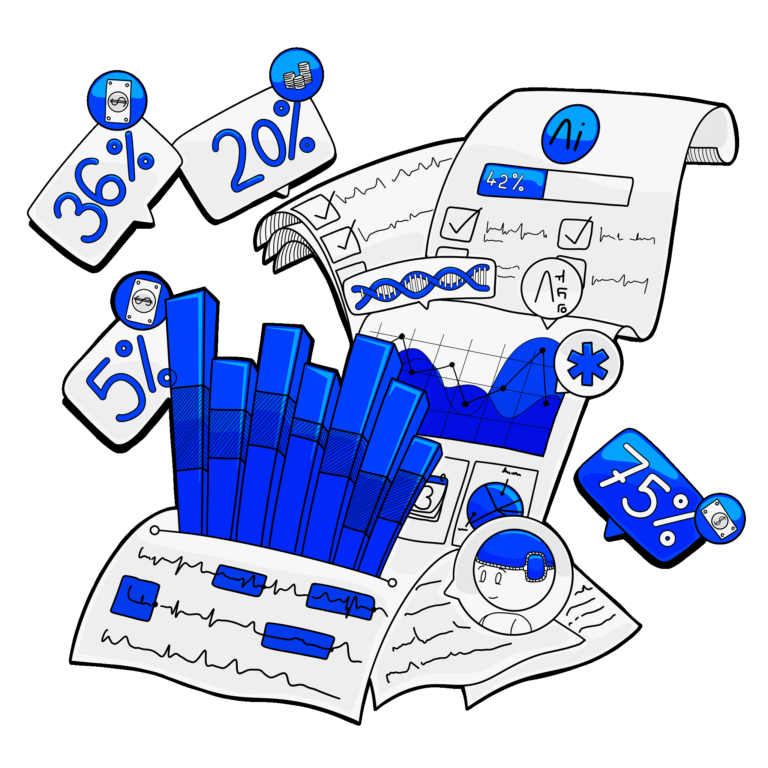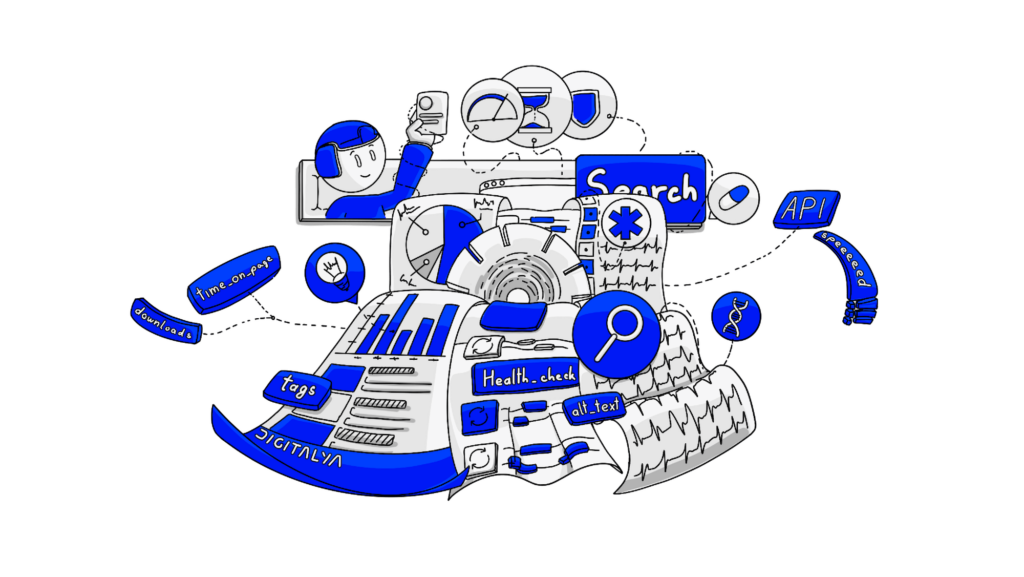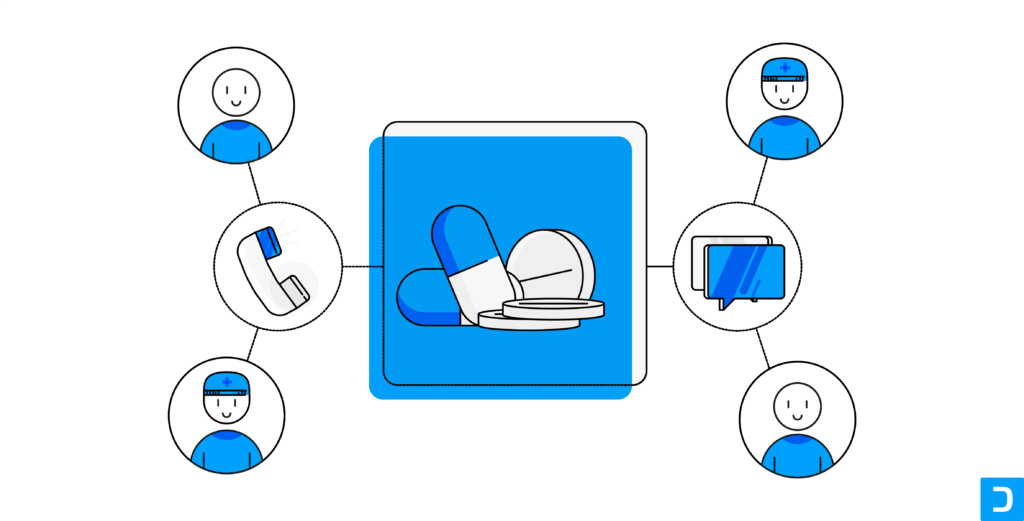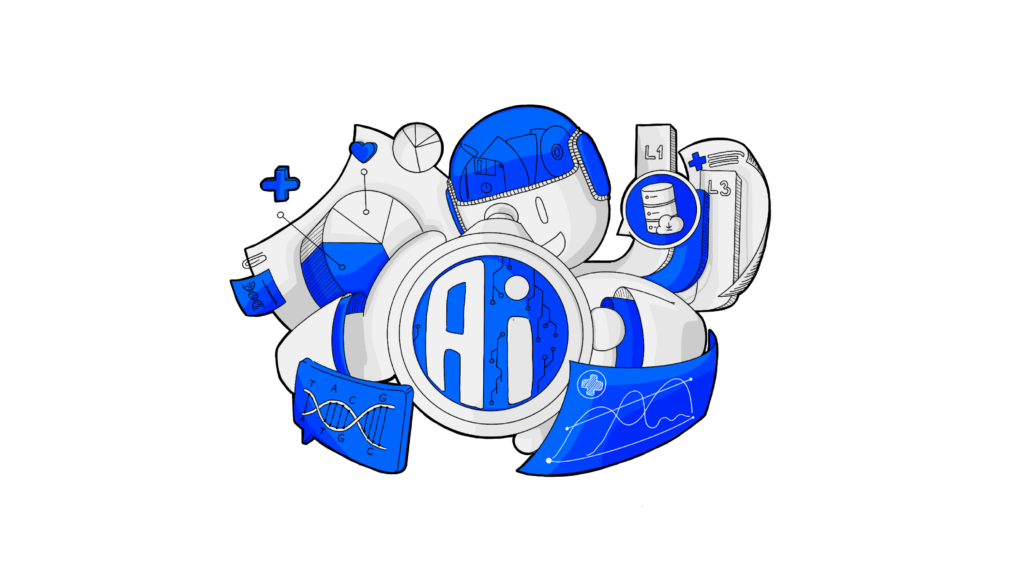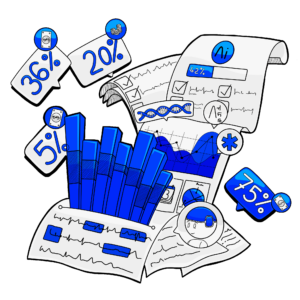The digitization of medical services is no news, and it has been a growing phenomenon for almost a decade. In 2015, the mobile healthcare app market counted around 27k medical apps. But medical app development sky-rocketed in 2020 due to the Coronavirus pandemic. According to the global mHealth market forecast from Statista, the third quarter of 2020 registered almost two times more healthcare mobile apps – around 49k. It was predicted to grow to 100 billion U.S. dollars by 2021.
The pandemic’s pressure on doctors and patients alike, the need for performant medical devices, and fast, effective healthcare solutions animated the entire healthcare ecosystem. A 2020 CBS Insights report on healthcare industries shows that, in Q1 2020, telehealth app funding grew by 300% as compared to Q4 2019.
Telehealth deals doubled from one quarter to the other. Healthcare AI startups got 37% more funding than in the previous quarter. That was two years ago. More recently, in 2021, the medical applications segment dominated the market. A recent report by Grand View Research predicts that the global mhealth app market will reach 105.9 billion U.S. dollars by 2030.
All this is to say that health app development is a very attractive line of business right now for development companies.
1. How do you make a medical app?
All bright and shiny, but how do you do medical app development if you haven’t dealt with this sector so far?
The good news is that the main steps are the same as for any web app development endeavor.
Pain points and Audience
You start by mapping the pain points of the healthcare industry to identify your target audience. Where lie the most ardent problems? Is it practice management? Patient monitoring? Access to medical services? Health insurance issues? Medical billing? Access to health data? Appointment schedules? Of course, you’ll think that all these are issues worth considering. And you are right. This is why the next question is which one you think you could address, considering the development teams you have at hand, the know-how and expertise, and the uiux developers you can employ (because the quality of the digital experiences matters greatly when it comes to medical services).
Once you have focused on a specific issue, see who becomes your audience. Who are the users and the beneficiaries? Are they the same? Do you build medical software that both patients and doctors will use? Is it for the healthcare professional only? Is it a patient app?
Then, you can figure out the more extensive use case: a hospital app? A telemedicine app? Personal health? Digital healthcare? Healthcare CRM?
Compliance
Before you start writing the first lines of code for MVP development, remember that medical app development is a more sensitive area with specific security requirements (we’re talking about sensitive healthcare data and patient privacy). Therefore, first, check your country’s healthcare regulations and compliance requirements.
For example, if your app development company resides in the U.S., your product must be HIPAA compliant first and foremost. The Health Insurance Portability and Accountability Act (HIPAA in short) is a public law from 1996 that governs the security requirements for healthcare apps. Not following HIPAA regulations can result in costly fees.
GDPR is the HIPAA compliance equivalent for European-based companies, aiming to protect the users’ privacy. Then, there are others to check: Android.os.health documentation, Apple’s Human Interface Guidelines for CareKit and HealthKit, and international standards like ISO27001, IEC 62304, and SOC2 Type 2. Also, check the MFi Program and the HITECH Act.
MVP development
Now that you know which rules you must go by, you can start the healthcare app development as you would typically for any web or mobile app.
After figuring out the app architecture and the user journey touchpoints, build an MVP. As for any development process, or even more in the case of app development for healthcare, checking the product-market match is crucial.
Test, tweak, and promote
What do your users best react to? Apps features? App design? User experience? The way users interact with your MVP will tell you exactly what to keep and what to tweak.
Once you have a version that makes you and your users happy, publish it in the app store and start promoting it.
Of course, everything sounds easy on paper, but we know well that there are other business aspects to consider beyond the sheer development process. How much does it cost? How long does it take? Can you sustain the effort? How much funding do you need? How will it monetize? What are the risks? Let’s see how we can answer.
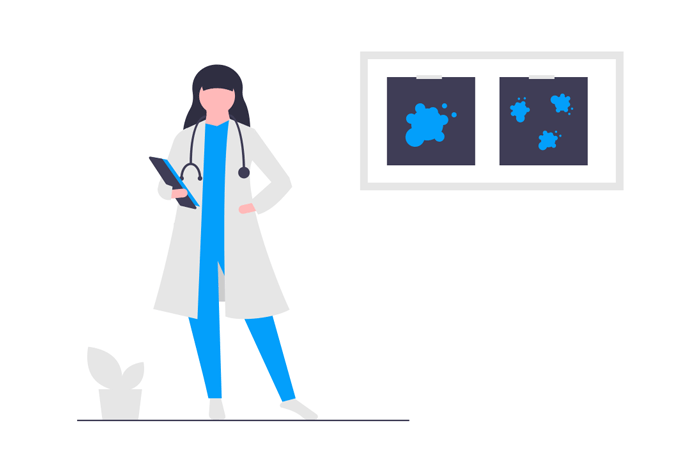
2. How much does it cost to develop a medical app?
How is it financially different healthcare software development from “classical” software development? Usually, it shouldn’t be much different – it is still app development. But, as usual, the medical app development cost depends on several factors:
- Web or mobile? Or both?
- Platform – do you choose native app development or cross-platform app development? The first is costlier, but it has its advantages.
- Features – do you know for sure what your medical app features are? Which are essential and which nice-to-have? The feature structure and complexity influence the development time and the number of developers needed.
- Team size – how many application developers do you need? Will you employ both web and mobile app developers? What about uiux designers? You’ll also need to work with at least one healthcare professional. Do you hire or subcontract product development?
- Duration – depending on your medical software’s complexity, the time to develop, test, and adjust it will mostly influence the cost of human resources.
- Compliance and regulations – to have permission to market your healthcare software, you need to check some requirements imposed by the Government, the app stores, and the healthcare industry.
In the end, it may come to these numbers:
- A single-platform mobile health app that is not very complex – between $45,000 and $80,000;
- Complex cross-platform applications – between $80,000 and $120,000 for development only.
- The total cost, from the pre-build phase to maintenance, however, can reach $425,000, even more than $500,000 in some cases.

3. How long does it take to develop a healthcare app?
Health app development is not that much different from regular app development, so if we consider the time that is usually necessary, it may fall under three categories:
- 2-4 months for a simple app
- 4-6 months for average complexity
- more than 9 months for a complex app.
It is fair to say that development for healthcare implies a rather complex process, even if you have a clear product roadmap (which you should, by the way). Left aside, the market needs research part, and the particularities of the health sector, you still have plenty of other aspects to consider.
First compliance. It may take several weeks to check all the requirements and get the necessary approvals.
Then, consider the learning curve. Will you employ your own product team for medical app development? Do they have the necessary knowledge or need to learn new technology? How long would it take them?
Which features have you envisioned? Real-time updates, integration with electronic health records, remote patient monitoring, or medical equipment integration are some features you may consider and that take a longer time to implement.
4. How do health apps make money?
One of the questions you need to answer when you plan your medical app development is monetization. How will it make money? It is also one of the first questions potential investors ask, so if you intend to secure funding, you’d better have a good answer.
The monetization model depends on the type of medical software you develop. Is it a hospital app? Is it a remote patient application? Is it for mobile medical services? A fitness app?
You can consider one or several of these 8 monetization methods:
- Subscription. It is comfortable for you and the user – you get financial predictability, and the users are not bothered by Ads and can use the app as much as they need.
- Licensing. It works well if your medical app acts on a SaaS model, especially if it is a B2B application. You may consider hospitals, medical practices, or independent healthcare professionals as your clients.
- Service sales. Users may purchase one-time services without the need for a subscription. It may work for a telemedicine app or e-learning in healthcare settings if the need is punctual.
- Sponsorship. This type of monetization is best suited if your healthcare software works with specific medical devices. You could get sponsorship from the device producer.
- Pay per download. It is the least popular model. It implies that you also provide a free version of your web or mobile healthcare app so potential clients know what they would pay for. It may work well for you if you can afford it, provided you can secure a large enough volume of paying users (as the download price cannot be high).
- Selling devices accompanied by medical software. Suppose the medical app you develop implies using specific devices, such as sensors for remote patient monitoring. You may get a larger profit margin from selling those devices and a software license.
- In-app purchases. Some of your medical app features may be free, but some (or an extended version of the free ones) need to be purchased. For this to work, you need to have a clear structure and prioritization of the features.
- Selling anonymized data. Medical research organizations, pharma companies, corporations interested in their employees’ well-being, health service providers, and even governments may look to buy such anonymized data that your health app can gather from patients or medical service providers. Provided, of course, it is all right with your national privacy and intelligence regulations.
5. Why do healthcare apps fail?
Like any app, its success depends on product-market match and rate of adoption, which influences how much money it can make (which is, ultimately, the indicator of its success).
Unsatisfactory user experience and accessibility
Although health applications are similar to other apps in many ways, there is an important difference: the user’s needs. From the start, someone who uses a healthcare application is in a position of vulnerability. This makes the interaction largely more important than for other kinds of software. Poor user experience and difficulty accessing the app will drive users away faster than you can say “sign in.”
Misidentified problem or solution
Often, app developers think they have identified the relevant pain point that will make their app the savior people expect. But they soon learn from how prospects don’t use their software that they have found a false problem. Or the issue may be right, but the solution does not solve it properly. Before getting to the health app development, research the issues and needs thoroughly.
Fail in compliance
Healthcare is a sector with a huge responsibility for all actors involved. Any product, be it physical or software, has to comply with rigorous regulations. You may have identified the problem and solution correctly, but if you fail to abide by the rules and compliances, you will have wasted time and money. Consult with healthcare professionals to learn all the details and all that is required to have the clearance needed.
6. What makes a health app successful?
First, by contrast, you can ensure the success of your health app by making sure you don’t make the errors mentioned above. But there is more to that. Here are some principles that lay the ground for your healthcare app to make it:
- Have a clear purpose: there may be several issues it solves, but you need to stay focused on the main problem/ need it addresses. It will help the development process and communication, as well.
- Know your target audience: how people will react to your medical app can be anticipated by considering their needs and behavior both for the features and the UX UI process.
- Be aware of the market trends: it is always safer to be one step ahead of the market’s evolution, especially regarding technology and consumer behavior.
- Scalability: be prepared to operate with large volumes of patient data and store data securely. Maybe it won’t happen fast, but it will come. And then, you wouldn’t want the software (and the system) to fail. Integrate this particularity from the very start of designing your health app.
- Integration: if you build a mobile health app, consider the integration with various devices. IoT is even more present and will continue to grow, so make sure you are on the right ship.
- Be different: with almost 50K healthcare apps in the apps market, you need to have a clear differentiator. It may need to be addressed, the way it solves a problem, a different approach for customized healthcare, the design, and the user experience. Make sure it is clear for you, your team, and the users.
For more inspiration, you can check some successful (top) healthcare apps to see what needs they address, what features integrate, and, very importantly, what experience they offer users.
7. How can I improve my healthcare app?
Your work isn’t done even if the app is on the market and gets traction. Constant improvement is the key to staying on the market, with all that growing competition in healthcare solutions and consumer preferences evolving. So how can you improve your app?
Collect and integrate feedback
It is extremely important to see how users interact with the app, what they like, what bothers them, and what else they need. Ask for their opinion and insight. Many will be happy to share their thoughts with you. Then make sure to integrate that feedback, prioritize and make the tweaks. Update the app constantly, every few weeks, to keep it “fresh.”
Learn from user data
Aside from telling you directly, users can “show” their preferences through user analytics. These can be collected using CRMs, client satisfaction apps, customer feedback analytics software, web analysis software, etc.
Keep up with technology
You know well how fast technology evolves. Stay connected to the advancements and seize the opportunities to enhance your medical app. Some integrations may not have been possible when you first released it, but now they can be easily done and might make users very happy.
To sum up, medical app development is not much different than regular app development, web or mobile. The difference, however, stands in how well you pinpoint the problem to solve and the quality of the user experience because you operate in a susceptible area: health. Your target audience is more likely to be vulnerable and needs empathy and warmth, together with efficient solutions and results. Time is precious, and fears are high when health is involved.

